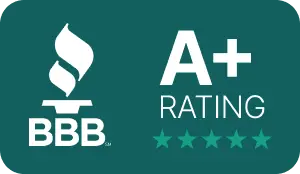Opening a probate estate can feel like trying to unlock a door whose key keeps changing shape. Courts have their own checklists, clerks insist on precise paperwork, and grieving families often discover that deadlines start running the moment a loved one passes. As a probate-funding company, we see heirs every day who are caught in limbo—unable to tap an inheritance that technically belongs to them but legally sits in suspense until a judge says otherwise. The good news? Petitioning the court is a learnable process. With the right forms, a clear view of filing fees, and a few practical strategies, you can set the estate in motion and shorten the wait for distribution.
Why the Petition Matters
The petition is more than an administrative nicety; it is the trigger that launches the entire probate process timeline. Until that initial filing lands on the clerk’s desk, banks will not release account balances, insurers will not cut checks, and title companies will refuse to transfer real property. In most states, the petition also stops the statute-of-limitations clock for creditor claims, protecting heirs from surprise lawsuits down the road. Think of the petition as the legal “on” switch—no electricity flows without it.
Core Forms You Will Need
Courts vary, but three documents appear on nearly every checklist:
- Petition for Probate or Letters Testamentary/Administration. This form asks for the decedent’s basic information, the estimated value of the estate, and the petitioner’s relationship to the deceased. Accuracy here shapes everything that follows, including the court’s bond requirement and notice obligations.
- Original Will (if one exists) plus any codicils. Staple nothing to the will—most clerks reject pages altered with fasteners, Post-its, or handwritten notes.
- Certified Death Certificate. Order extra copies at the outset; you’ll need them for banks, life-insurance carriers, and tax filings.
Some jurisdictions also require a confidential “supplemental inventory” listing Social Security and bank-account numbers. Complete it carefully; clerks will bounce filings for a single transposed digit.
Filing Fees—and How to Budget for Them
Sticker shock is common. A straightforward filing in Los Angeles County costs over $450 just to open the matter. Add on publication fees for the mandatory newspaper notice, and many families write checks well north of $1,000 before a judge even reviews the case. Those figures climb when real estate requires multiple certified letters or when out-of-state assets force ancillary actions.
Understanding the universe of probate court costs and filing fees helps families anticipate expenses—and explains why some heirs choose a cash advance against their share. In our experience, front-loading the filing budget avoids the “false start” that occurs when a clerk refuses to docket a petition that arrives without payment in full.
Timing the Petition for Maximum Efficiency
You cannot eliminate statutory waiting periods, but you can shave weeks off the front end:
- Gather vital records early. Order death certificates and locate the original will before you schedule an appointment with the clerk.
- Use the court’s e-filing portal where available. Digital submissions time-stamp instantly and often leapfrog over mail-in stacks.
- Pay for certified mail rather than standard. Proof of service matters more than saving a few dollars.
By streamlining these steps, the estate reaches its first hearing sooner, which, in turn, compresses the entire probate process timeline.
What to Expect at the First Hearing
Many heirs picture a dramatic courtroom scene. In reality, the initial calendar call is brief—often under ten minutes—unless someone contests the will or raises a bond objection. Petitioners should still prepare: arrive early, dress in business attire, and bring extra copies of every filed document. A predictable rhythm governs the session, and understanding it in advance feels like having a backstage pass inside a probate court hearing. Judges typically confirm the petition’s completeness, hear any objections, and then issue Letters Testamentary or Administration, officially empowering the executor to act.
When (and Why) Hearings Turn Contentious
Although most estates proceed uneventfully, disputes over asset valuations, ambiguous will clauses, or disinherited relatives can catapult the matter into full-blown litigation. Our funding team monitors these flashpoints closely, because contested cases often require larger advances to keep properties insured, mortgages current, or tax bills paid while the battle unfolds.
Understanding the terrain of probate litigation 101 helps executors gauge whether mediation, selective asset sales, or short-term financing will steady the ship. Even when the law is on the executor’s side, a single objection can delay distribution for months, making liquidity a strategic lifeline rather than a luxury.
The Silent Estate: When No One Files
Occasionally, grief, family stalemate, or sheer procrastination stalls the process before it starts. Months pass, taxes accrue, and property deteriorates, all because the nominated executor never submits the petition. If you are a beneficiary watching equity erode, you have options. Most states allow an “interested party” to petition the court when the personal representative fails to act within a statutory window—often 30 to 90 days.
Filing such an application requires delicate diplomacy; aggressive moves can fracture family relationships. Yet doing nothing courts a worse outcome. As a funding company, we routinely assist heirs who face this dilemma, advancing funds to secure vacant homes or settle urgent debts while the court decides whether to replace the absentee executor. Knowing the potential fallout of when an executor fails to file empowers beneficiaries to balance patience with decisive action.
Practical Tips From the Funding Front Lines
Anticipate collateral paperwork. Courts increasingly require supplemental declarations—proof of notice to creditors, updated inventories, or bond waiver affidavits. Having templates ready reduces scramble time.
Budget a cushion. Filing fees may rise mid-year, and multiple certified mailings add incremental costs. Setting aside an extra 10-15 percent keeps the process moving even if the clerk surprises you with a surcharge.
Document every communication. Email threads with heirs, certified-mail receipts to creditors, and banking records create a clear audit trail. Should litigation erupt, contemporaneous notes carry weight with judges.
Consider interim financing strategically. Advances backed by inheritance proceeds can stabilize an estate—keeping property taxes current or footing the appraisal costs that judges often demand. Because the advance is non-recourse, repayment comes solely from the eventual distribution, not from your personal assets or credit score.
A Word on Transparency and Trust
Probate funding is built on alignment: we recover only when heirs do. That structure incentivizes us to shepherd each estate toward resolution rather than drag our feet. Still, not every company operates with equal candor. Request a term sheet that discloses total payoff projections under different settlement dates. Ask whether the company caps fees after a set period or compounds monthly. Trustworthy providers welcome those questions, because informed heirs make stronger partners.
Moving Forward
Petitioning the court to open probate is the hinge on which the entire estate swings. Handle it with precision, and the process unfolds in orderly stages—publication, inventory, creditor bar date, distribution. Handle it poorly, and the estate risks stagnation, protracted litigation, or even bond revocation. Whether you are an executor marshaling assets, an heir anxious for closure, or a real-estate investor eyeing a vacant family home, the petition sets your timeline.
If legal fees or property expenses threaten to derail progress, a probate advance can bridge the gap, keeping homes insured, taxes paid, and equity intact while the court works at its own pace. Ultimately, the petition is both a procedural necessity and an opportunity: file it correctly, and you transform inheritance from a distant promise into a managed timeline with a foreseeable payout.








